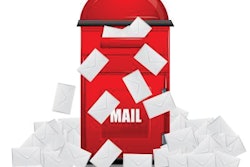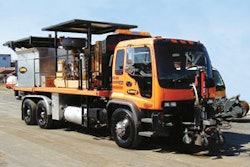Without a doubt, one of the marketing methods most touted for small businesses with very specialized audiences is direct mail. It can be done on a small budget, and, when tightly targeted, is very effective in generating sales and customer loyalty.
"In addition to generating inquiries and sales, direct mail is used to create awareness of a business or product, to build credibility, and to reinforce one's position in the marketplace," say the authors of "Getting Business to Come to You," by Paul and Sarah Edwards, and Laura Clampitt Douglas.
"Database marketing provides vital information to target smaller groups of customers with similar needs, making marketing more efficient and effective. As important, it also offers measurability, and with it, accountability for a business' marketing efforts," says Philip Kotler in his foreword for the book, "TargetSmart! Database Marketing for the Small Business" by Jay Newberg and Claudio Marcus.
Both Steven Peters of Rivers Advertising and Marketing, and Retail Marketing Consultant Dean Skylar agree. Not enough businesses are making good use of their databases in keeping in contact with customers.
The key is a good list
Crucial to an effective direct mail campaign is developing a good mailing list. There are several ways to do so. The ideal way, of course, is to gather your list of previous customers. As the authors of "Getting Business to Come to You" point out, "There are no better prospects than those who have done business with you before."
There are many ways to develop your own list. You can use the names and addresses off of checks customers use to pay their bills. Warranty cards and service tickets should also be entered into the list. "Customers are typically not opposed to giving this information to you," says Skylar. "They are in your store for a reason. And they want to hear from you."
Another way is to hold various drawings and raffles. Customers complete entry forms that capture the demographic information needed for a mailing list. However, in "Getting Business to Come to You," the authors warn to "be sure drawing and contest prizes are something that only your market would want so that you don't get a lot of useless names."
If you have not yet developed a list of customers, it is possible to buy or rent lists from list companies or list brokers until you develop your own. The quality of lists varies quite a bit, so take a look at "The Ideal List" above to see what elements make a good list before calling.
"I recommend renting resident lists versus occupant lists," says Skylar. "Resident lists include demographic information, and can be rented for unlimited one-year usage. Occupant lists provide the mailing address only."
Three list vendors to consider are Americomm in Louisville, KY, AmericaList in Middleburg Heights, OH, and American Business Lists in Omaha, NE.
Be sure to keep lists as "clean" as possible. When mailings are sent first-class, the post office will inform you via returns of people that have moved, incorrect addresses, etc. Be sure to make those changes. "Send out at least one mailing quarterly, purging the names that are not current and adding new names regularly," recommend the authors of "Getting Business to Come to You."
Write often and follow-up
How many times should you use this list? Experts say at least three times a year; five to seven times per year is ideal. According to "Getting Business to Come to You," the rule of thumb in marketing claims it takes seven contacts to produce a sale.
The authors go on to say the statistics for a traditional direct mail piece is not encouraging - but there is a lot you can do to increase your odds for success. "The overall average response rate for direct mail is one-tenth of one percent. But if your product or service is appropriate for direct mail and you have been using the methods recommended for designing a creative promotion piece and finding a perfectly tailored list, you could reach a response rate of 30 percent or higher. But that is the exception, not the rule."
They go on to say, "There are a variety of ways you can multiply your direct mail response. Using prepaid response cards can help dramatically, as can following up either with an additional mailing or a phone call." In fact, the most effective results come from combining direct mail with a telephone call.
You can use these mailings to tighten your relationship with existing customers. "Identify opportunities to start rewarding customers," says Skylar. "Department stores find this method very successful. Invite them to a customer-only private sale the day before the sale is scheduled to begin. It makes them feel special. All it takes is a postcard."
The authors of "Getting Business to Come to You" discuss variety. "Your current client list should be contacted on a regular basis by postcard, letter, a simple flyer, or a newsletter, perhaps presenting a special offer or promotion."
It might be a good idea to hire a consultant to help you develop your first materials. But with so many technological advancements, it can be as simple as investing in a desktop publishing program to create your own materials on the computer. Many laser printers produce professional-quality art. Also, be sure to ask your manufacturers for artwork, too. They often have line art and photography of the products you want to feature - for free or at a minimal cost.
If initially creating your own mailings seems too difficult or expensive, go back to your suppliers for help. Steve Dunigan of Dunigan's Outdoor Equipment in Jackson, MI, takes full advantage of the materials his manufacturers have to offer. He uses over-sized, 4-color postcards that boast commercial equipment to send to his landscape contractor customers. The cards are blank on the backside, allowing him to put his own message on them. He also uses as a mailer a pre-designed newsletter to commercial clients. The stories appeal to that audience. All Dunigan has to do is have his own "column" printed in the space allowed and - voila! - it becomes his own personal mailing.
And remember, timing is everything. Be sure to allow enough time before a sale or special event for both production and delivery of your mailing pieces. For instance, if you opt for bulk rate postage, it could take as long as a week for customers to receive the mailing.
The Ideal List
According to the authors of "Getting Business to Come to You," here are things to look for when renting or buying a mailing list.
- The names and addresses are accurate and current (many lists have 20-percent inaccuracy).
- These prospects need your product or service.
- They can afford to buy your product or service.
- They know or have heard of you, your company, your product or your service.
- They have a positive regard for you, your product, your service.


















